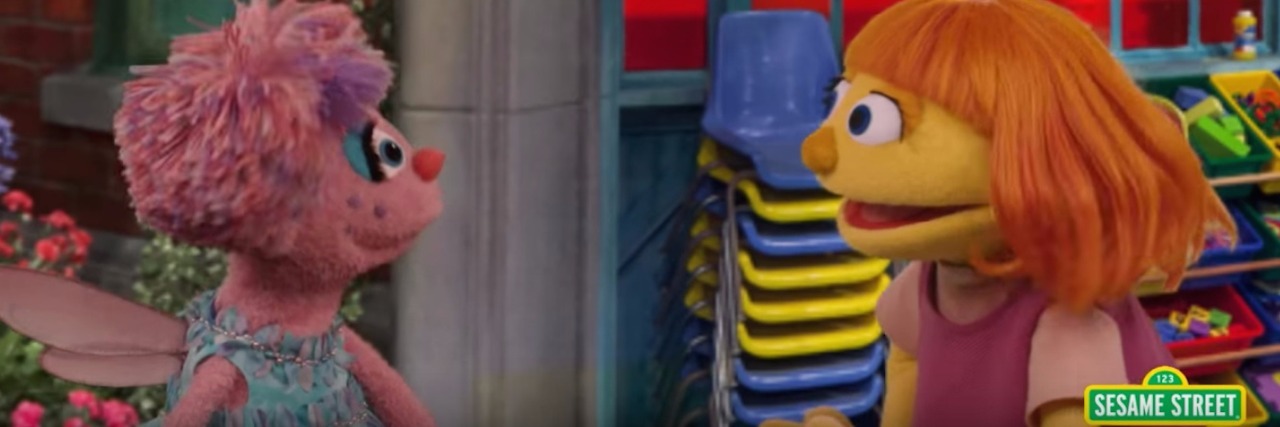How the New Girl on the Street Can Help Children Understand Autism
In case you missed it, one of the nation’s oldest and most beloved children’s television programs has taken a huge step towards inclusion of children with disabilities.
In the next couple of weeks, Sesame Street is introducing its newest character, Julia, a young girl on the autism spectrum. Writers for the show expressed Julia “does things a little differently.” This is part of a larger campaign geared towards introducing children to autism and reducing the stigma still associated with autism.
The show is striving to portray some behaviors associated with autism in an environment where children will see Julia accepted by their favorite characters. This way, they will hopefully better understand if they see some of the same behaviors exhibited by their classroom peers. This is an ambitious endeavor since, of course, autism can be different for each individual. As the saying goes, “When you’ve met one person with autism, you’ve met one person with autism.”
Learning about Julia and her upcoming debut on “Sesame Street” immediately evoked tears for me. Having grown up with a younger sibling with autism, I know firsthand the very real impact this character can have in teaching children at a young age about autism and the need for empathy and understanding. My brother was bullied for many of the behaviors Julia exhibits, including the hand flapping, sharp reaction to loud noises, inability to read social cues and ultimately for appearing “different.” Unfortunately, children were not the only problem, as many adults were not compassionate or understanding when my brother would exhibit these behaviors in public. My family became accustomed to the stares and rude comments when we were out to dinner, at the movies or even the grocery store. Oftentimes, people seemed to believe he was simply misbehaving as a result of bad parenting, rather than accepting his actions were the direct result of his disability.
“Sesame Street” has created another big crack in the proverbial glass ceiling that still suppresses open discussion and inclusion of individuals with autism and other disabilities in our society. However, there is still a lot of work to be done. Bullying is an age-old problem that has become an issue of national concern in the last several years with the rise in self-harming behaviors and suicides. Children with disabilities can be especially vulnerable to bullying for a variety of reasons, but namely because they appear “different.” How easy would it be for us as parents, educators, role models and leaders to follow the lead of “Sesame Street” and start teaching children that different does not equal bad, but it is a beautiful part of humanity that should be fostered and embraced? Kindness and acceptance begins at home, and I do not believe children are “born bullies.” Bullying can be a learned behavior, and it could be replaced with empathy and compassion. Wouldn’t it be nice if a new student with autism at school could be “just another new kid” a child accepts and befriends, rather than that “different kid” eating alone in the cafeteria or playing alone on the playground?
Information is power, and I believe “Sesame Street” is empowering families like mine and yours across the country, and around the world, by helping a large portion of the population — children and adults alike — learn more about autism and how they can be helpful and kind to those on the autism spectrum.
We want to hear your story. Become a Mighty contributor here.
Photo source: YouTube video screenshot

